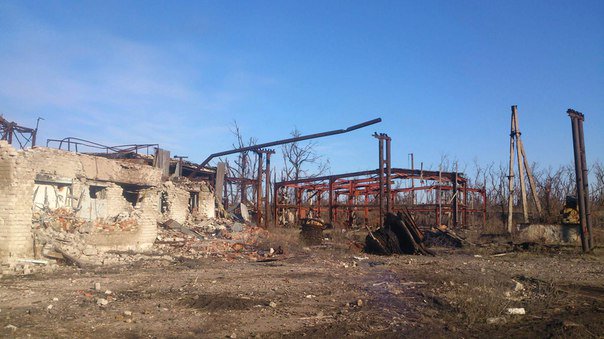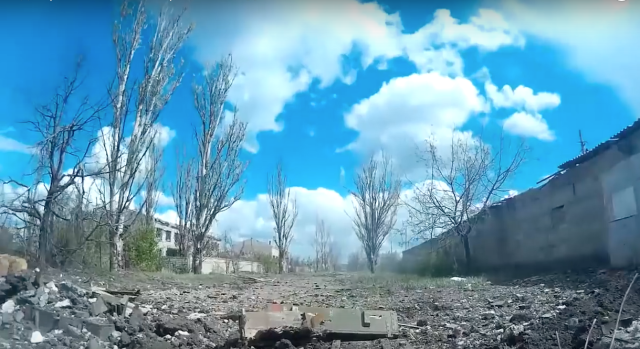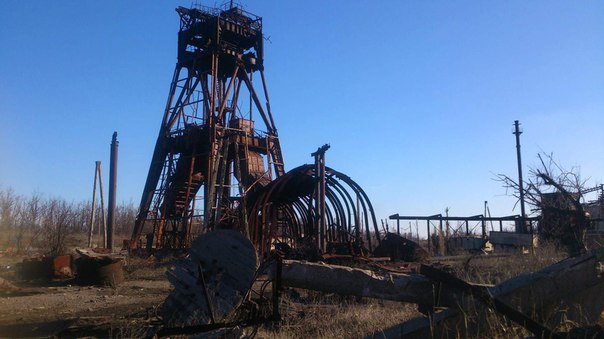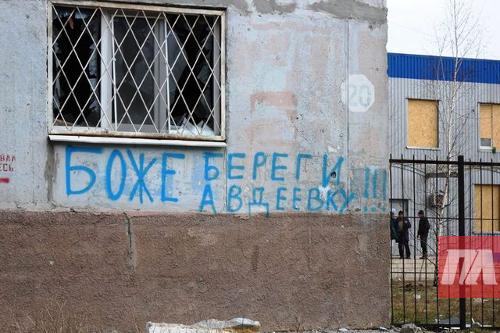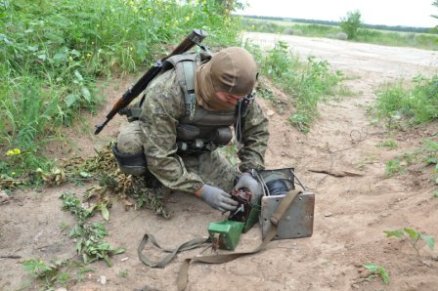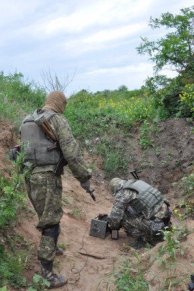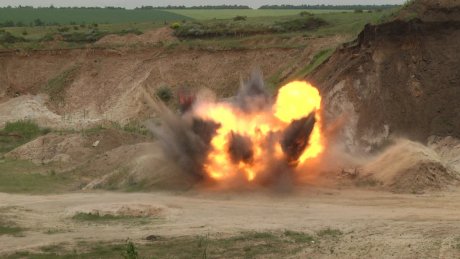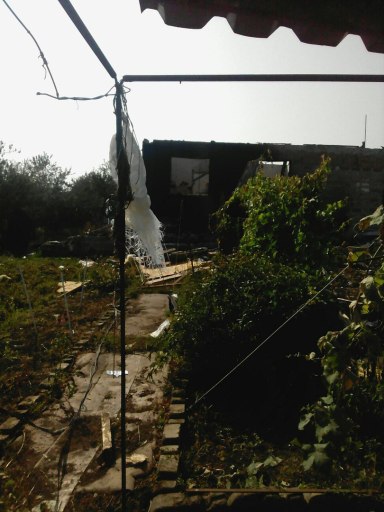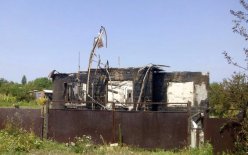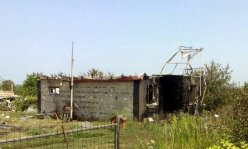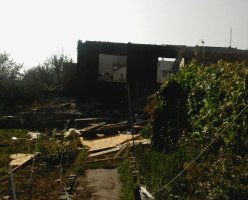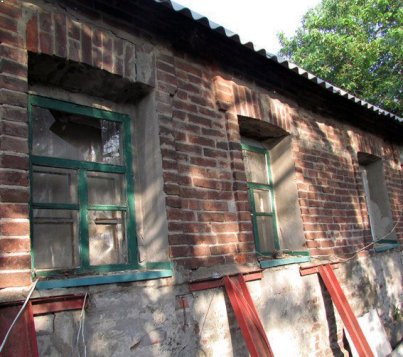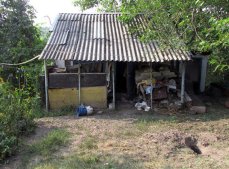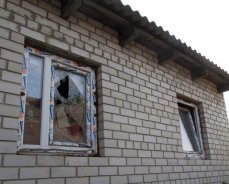Fight or Flight
Ukraine now has the second-largest standing army in Europe; Russia has the largest.
After a two-year crash course to rebuild its military, Ukraine has increased its active-duty ranks from 150,000 to 250,000 troops.
(France has about 209,000 active troops, Germany has about 176,750 active troops, Spain has about 133,000, Poland has about 101,500, and the U.K. has about 153,600.)
Ukraine rebuilt its army “almost from scratch within two years,” Poroshenko said in the Independence Day speech.
Today, “Ukraine is capable of defending itself, but requires further support,” Poroshenko said.
Ukraine has also increased its defense budget to about $6 billion, representing roughly 5 percent of the country’s gross domestic product. Military spending is set to increase by about 10 percent annually.
Russia, which has three times the population of Ukraine and 10 times the GDP, has an active-duty force of about 800,000 with a reserve force of 2 million. Russia’s 2015 defense budget was about $65 billion—roughly 10 times that of Ukraine and on par with the United Kingdom.
Ukraine’s annual defense budget is still a fraction of Western military powers, such as France (about $36 billion), Germany (about $37 billion), and the United Kingdom (about $65 billion).
Ukraine’s military strength, however, lies in the size of its army, and the quantity of military hardware at its disposal.
Ukraine, for example, currently operates more than 2,800 tanks—compared with 423 in France, 407 in the U.K., and 408 in Germany.
And Ukraine’s arsenal comprises 625 multiple launch rocket systems—compared with 44 in France, 42 in the U.K., and Germany’s 50.
Yet, while Ukraine maintains a numerical advantage over other European nations in terms of troops and conventional weapons, its military needs to modernize. Much of Ukraine’s arsenal dates from the Cold War.
Arms Race
Eastern Europe is rapidly militarizing.
According to Ukrainian military reports, combined Russian-separatist forces in the Donbas now wield about 700 tanks, 1,200 armored vehicles, 1,000 pieces of artillery, and 300 multiple launch rocket systems.
This puts the combined Russian-separatist forces in control of more tanks, multiple launch rocket systems, and artillery pieces than the armed forces of France, Germany, Italy, Spain, and the United Kingdom.
Among EU countries, only Poland controls more tanks than combined Russian-separatist forces possess in the Donbas.
According to Ukrainian military reports, as well as reports from civilian intelligence firms, there are about 1,500 to 5,000 Russian regulars currently operating in the Donbas in tandem with a separatist force of about 40,000 troops.
Russia also has about 55,000 military personnel forward deployed to bases on the Ukrainian border, Ukraine’s military said.
Russia has also built up a heavy military presence in Crimea. The Ukrainian military says Russia has about 45,000 military personnel inside the occupied peninsula.
Since 2010, Russian military spending has gone up by 80 percent, according to NATO.
Russian military spending surged by 28.6 percent in 2015 alone. Russia’s initial 2016 military budget called for an 8 percent reduction in overall military spending, but a late budget addition this year boosted overall military spending to about 3.89 trillion rubles (about $62.4 billion)—a 14 percent jump from 2015 spending, in real terms, according to a NATO report published on the alliance’s website.
Russia is about midway through a 10-year military modernization project, called the State Armaments Program. From 2010 to 2020, the Kremlin’s military overhaul project plans to spend 19 trillion rubles, about $647 billion at the average exchange rate in 2011, across all branches of the Russian armed forces.
Despite a 3.7 percent fall in GDP in 2015, and a projected 0.8 percent decline this year, Russia is still on track to meet 17.5 trillion of its pledged 19 trillion rubles for the overhaul.
Russia’s military adventures in Ukraine rattled the former Soviet countries of Latvia, Lithuania, and Estonia—all NATO members. Military spending across the Baltic countries has consequently surged.
In 2020, the combined defense budgets of Estonia, Latvia, and Lithuania are projected to have increased by 226 percent over 2005 levels—from $930 million to $2.1 billion.
Latvia and Lithuania have had the two fastest growing defense budgets in the world since 2014, according to IHS Jane’s. And by 2018, the three Baltic states will have each doubled or tripled their budgets from 10 years ago, said Craig Caffrey, principal analyst at IHS Jane’s.
“This growth is faster than any other region globally,” Caffrey said.
The Military-Industrial Complex
Ukrainian society and industry are becoming more martial due to the conflict with Russia.
For one, Ukraine has embarked on a piecemeal reconstitution of its military-industrial complex. This revival has, however, been fraught with accusations of corruption and bureaucratic resistance to change.
Ukraine has the legacy industrial infrastructure to be a major arms producer. According to a recent report by the Stockholm International Peace Research Institute, Ukraine was the world’s ninth-largest arms exporter in the period from 2011 to 2015.
During the Soviet era, Ukraine was an industrial hub for producing weapons and military hardware. The Soviet model, however, required production to be scattered across different Soviet countries, so that no one country was exclusively relied upon to produce vital military hardware.
The Soviet military-industrial complex was a collective effort across the USSR. Today, Ukraine is consequently left with production gaps from the Soviet era.
An example: Antonov, Ukraine’s largest state-owned aircraft producer, had previously relied on parts from Russian suppliers. Due to the war, however, those suppliers have been cut off.
Antonov now produces about three aircraft a year, according to Ukrainian news reports. The company needs to produce about 12 aircraft annually to be profitable.
In a statement published to its website, Ukroboronprom, Ukraine’s nationalized defense production conglomerate, said it was operating at less than half its production capacity due to “underfunding of the Ministry of Defense of Ukraine, which occurred due to the lack of legislative changes.”
The Ukrainian government allocated 13.5 billion hryvnias (about $500 million) in 2016 to repair, modernize, and produce new weapons for its armed forces.
Ukroboronprom said it received only 32.6 percent of this amount—4.4 billion hryvnias, or about $163 million—from the government. Out of that payment, 1.6 billion hryvnias ($59 million) went to repair military equipment, and 2.8 billion hryvnias ($104 million) to produce new weapons.
Ukrainian society has also adapted to the state of perpetual conflict with Russia.
Across the country, civilians regularly meet on the weekends for military training. They comprise a network of partisan forces called territorial defense battalions.
These civilian volunteer paramilitary units, which can be rapidly mobilized to defend against a Russian invasion, are not official military units. But they receive training, equipment, and in some cases, arms from the regular military.
This grassroots defense mindset—a throwback to partisan groups in World War II—promises a protracted guerrilla conflict should Russia ever invade Ukraine.
“When Putin encounters the possibility of fighting territorial defense battalions, militias, or even students, it acts as a deterrent,” Serhiy Yanchuk, an associate professor at Taras Shevchenko National University, told The Daily Signal in an earlier interview.
Yanchuk is coordinator of the university’s Students Guard, a volunteer militia comprising students and faculty.
NATO Standards
Ukraine’s military is in the process of a top-to-bottom overhaul to bring it in line with NATO standards by 2020.
Even the colors of symbols denoting friendly versus enemy forces on military maps have been flipped to match NATO maps. (Friendly forces were marked red and the enemy was blue on Soviet military maps, a color arrangement still used by Russia.)
In 2015, the Ukrainian Ministry of Defense launched a special reform office, spearheaded by 39-year-old businessman Andriy Zagorodnyuk.
Ukrainian news reports have documented the bureaucratic headwinds Zagorodnyuk has faced while trying to reform the military.
“This year, we had a huge bureaucratic backfire from the system,” Zagorodnyuk told the English-language Kyiv Post newspaper in November. “Bureaucratic, probably corrupt. … Very rarely someone tells you to your face that he wants to keep things the old way. Usually people come up with a million different excuses.”
On May 20, Poroshenko, Ukraine’s president, signed into law a comprehensive military reform plan called the Strategic Defense Bulletin.
The document calls for a total revamp of Ukraine’s military doctrine, training, and operations to ultimately achieve the “criteria necessary for the full membership in NATO.”
It also singles out Russia as Ukraine’s No. 1 national security threat.
Ukraine is not vying for regional influence over Russia. Rather, many Ukrainian soldiers and politicians say the current conflict is for Ukraine’s independence from Moscow.
Yet, tensions are inflamed to such a degree between Ukraine and Russia that there is scant leeway to absorb the shock of an unexpected event without it leading to total war.
“Ukraine is mobilizing around another idea—the idea of a political nation, that would one day find its place in European political, economic, and security structure,” Plokhy, the Harvard University professor, said.
Plokhy added: “It is not only a state-political divorce, as it was in 1991. It is a mental, psychological breakup of Ukrainians and Russians.
”Source:
http://en.censor.net.ua/r419170




